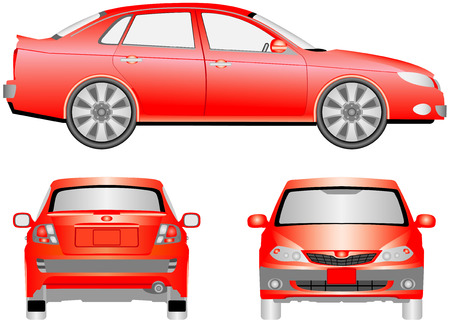1. Understanding the Unique Demands of British Roads
When selecting the right tyres for use in the UK, it is essential to appreciate the distinctive challenges posed by British roads. The United Kingdom’s climate is famously unpredictable, with frequent rain showers, occasional snow, and varied temperatures even within a single day. This climatic inconsistency directly affects tyre performance, particularly in terms of grip, aquaplaning resistance, and wear rate. Beyond weather, the diversity of road surfaces—ranging from smooth urban tarmac to rugged rural lanes—places unique demands on tyres. Urban roads often feature potholes, speed bumps, and stop-start traffic, while country lanes may be narrow, uneven, or covered in mud and gravel. Additionally, British driving habits—such as regular commuting through congested cities or taking scenic drives along winding countryside routes—influence what drivers need from their tyres.
To illustrate how these factors interact, consider the following:
| Factor | Urban Roads | Rural Lanes |
|---|---|---|
| Climate Impact | Frequent wet conditions; risk of standing water | Variable weather; potential for ice and mud |
| Surface Type | Smooth but prone to potholes and debris | Uneven, loose surfaces; risk of punctures |
| Driving Habits | Stop-start traffic; short journeys | Longer distances; higher speeds on bends |
This complex interplay underscores why British motorists must choose tyres engineered for versatility: strong wet-weather grip, robust sidewalls for rough surfaces, and reliable all-season performance are not luxuries—they are necessities for safety and efficiency on UK roads.
2. Tyre Types Available in the UK Market
When selecting tyres suited for British roads, its crucial to understand the various types available and how each performs under the UKs often unpredictable weather. Below is a comprehensive comparison of all-season, summer, winter, and performance tyres, highlighting their advantages and drawbacks for drivers navigating British conditions.
| Tyre Type | Pros | Cons | Best For |
|---|---|---|---|
| All-Season Tyres | Balanced performance year-round; good grip in moderate wet and dry; cost-effective; no need for seasonal changes | Not optimised for extreme cold or hot; may wear faster than seasonal tyres if used aggressively | Urban commuters; areas with mild winters and limited snow or ice |
| Summer Tyres | Superior handling and braking in dry and wet (above 7°C); improved fuel efficiency due to lower rolling resistance | Poor traction in freezing temperatures or snow; rubber hardens in cold, reducing safety | Enthusiasts; drivers prioritising precision and performance during warmer months |
| Winter Tyres | Enhanced grip on snow, ice, and cold wet roads; tread patterns designed for slush and low temperatures (below 7°C) | Noisy and less efficient on dry roads; wears quickly in warmer conditions; requires seasonal changeover | Northern regions or rural areas prone to snow/ice; drivers needing reliable winter mobility |
| Performance Tyres | Exceptional cornering, speed stability, and braking at higher speeds; advanced compounds for sporty driving | Typically less durable; can be noisy; expensive; not suitable for wintry conditions | Sports cars, premium vehicles, or spirited driving on well-maintained tarmac |
Key Considerations for British Roads
The UKs variable climate means many motorists opt for all-season tyres as a practical compromise, while those living in regions with harsher winters may benefit from switching between summer and winter sets. Performance tyres are best reserved for those seeking maximum grip in specific driving scenarios, rather than everyday commuting. Ultimately, assessing your driving habits, local climate patterns, and road surfaces will help determine which tyre type delivers the safest and most cost-effective solution for British motoring.

3. Key Performance Indicators: What Really Matters in the UK
When selecting tyres for British roads, it is crucial to evaluate specific performance indicators that directly impact safety, comfort, and cost-effectiveness. The UKs unpredictable weather conditions and varied road surfaces demand careful consideration of certain tyre metrics. Below, we delve into the four most important indicators—wet grip, fuel efficiency, road noise, and longevity—and assess their significance for UK motorists.
Wet Grip: Safety First on Rain-Soaked Roads
The UKs frequent rainfall makes wet grip arguably the most critical factor for tyre selection. Tyres with superior wet grip offer shorter braking distances and enhanced handling on slippery surfaces, reducing the risk of accidents during adverse weather. The EU tyre label rates wet grip from A (highest) to E (lowest), making it easier for drivers to compare options objectively.
Fuel Efficiency: Balancing Cost and Environmental Impact
Rising fuel prices and growing environmental awareness have placed greater emphasis on tyres that improve fuel economy. Low rolling resistance tyres can help reduce fuel consumption, lowering both running costs and carbon emissions—a priority for many British households. This indicator is also graded A to E on the EU label.
Road Noise: Ensuring Comfort on Urban and Rural Routes
With an increasing focus on driving comfort and urban noise regulations, road noise has become a key consideration. Tyres are now rated for external rolling noise (measured in decibels) and classified into one to three waves on the EU label. Quieter tyres contribute significantly to a more pleasant driving experience, especially on Britains diverse mix of city streets and country lanes.
Longevity: Value Over Miles
Given the UKs mix of motorway commutes and stop-start city traffic, tyre durability is essential. Long-lasting tyres provide better value for money by reducing replacement frequency. While not featured on the EU label, manufacturer warranties and independent reviews offer valuable insights into expected lifespan.
Comparative Table: Tyre Performance Metrics Explained
| Performance Indicator | EU Label Rating | UK Relevance | Key Benefit |
|---|---|---|---|
| Wet Grip | A–E | Essential due to frequent rain | Improved braking & safety |
| Fuel Efficiency | A–E | Important with high fuel costs | Lower running expenses & emissions |
| Road Noise | One–Three Waves / dB level | Cities & rural areas alike benefit from reduced noise pollution | Smoother, quieter journeys |
| Longevity | N/A (Refer to manufacturer data) | Saves money over time; suited to all driving styles across the UK | Fewer replacements required |
Selecting tyres based on these core performance metrics ensures British drivers achieve optimal safety, comfort, efficiency, and value—no matter the region or season.
4. Legal and Safety Considerations
When selecting the right tyres for British roads, it is imperative to understand the legal requirements and safety standards enforced across the UK. This ensures not only compliance with the law but also optimal safety for drivers navigating the country’s diverse and often unpredictable weather conditions.
UK Tyre Legal Standards
The United Kingdom has clear legal mandates regarding tyre tread depth and labelling. Adhering to these is essential to avoid penalties and ensure your vehicles performance remains reliable in all driving situations.
| Requirement | Legal Standard | Implication |
|---|---|---|
| Minimum Tread Depth | 1.6mm across the central three-quarters of the tyre, around its entire circumference | Failure to comply can result in a fine of up to £2,500 per illegal tyre and 3 penalty points |
| Tyre Labelling | EU Tyre Label Regulation (still applicable post-Brexit), indicating wet grip, fuel efficiency, and noise rating | Helps consumers make informed choices based on objective performance criteria |
| Tyre Condition | No cuts, bulges, or exposed cords; must be fit for purpose | Ensures structural integrity and minimises risk of blowouts or loss of control |
Safety Tips for British Roads and Weather
The UK’s climate brings frequent rain, occasional snow, and variable temperatures—all factors that impact tyre performance. Here are tailored safety tips for choosing and maintaining tyres in Britain:
- Select Season-Appropriate Tyres: Opt for all-season or winter tyres if you regularly drive in colder regions or during harsh winters. Summer tyres are more suited for mild conditions but may underperform in wet or icy weather.
- Regularly Check Tread Depth: Wet British roads demand sufficient tread for effective water displacement. Consider replacing tyres before reaching the legal minimum, especially ahead of autumn and winter.
- Monitor Tyre Pressure: Fluctuations in temperature can affect pressure levels. Use a reliable gauge to check regularly—underinflated tyres increase stopping distance and wear unevenly.
- Avoid Mixing Tyre Types: For balanced handling and braking, ensure all tyres on your vehicle match in type, size, and tread pattern.
- Inspect for Damage After Potholes: British roads are notorious for potholes; always inspect your tyres after encountering rough surfaces to prevent unnoticed damage.
The Importance of Compliance and Proactive Maintenance
Staying within legal guidelines is non-negotiable, but going beyond minimum standards enhances both safety and driving enjoyment. By prioritising regular inspections, proper inflation, and timely replacements, British motorists can confidently face the challenges posed by local roadways and ever-changing weather conditions.
5. Price versus Performance: Finding the Right Balance
When selecting tyres for British roads, achieving the optimal balance between price and performance is crucial. While it’s tempting to opt for the cheapest available option, this approach can compromise safety, durability, and ultimately cost you more in the long run. Here’s how to navigate the choices between premium and budget brands, while considering long-term value tailored to UK driving conditions.
Understanding Tyre Pricing Tiers
| Tyre Category | Typical Price Range (per tyre) | Main Features | Best Suited For |
|---|---|---|---|
| Budget | £40-£70 | Basic tread design, shorter lifespan, limited grip in wet conditions | Urban drivers on a tight budget, low annual mileage |
| Mid-Range | £70-£110 | Improved compound technology, balanced wet/dry performance, moderate durability | Commuters, family cars, average UK road use |
| Premium | £110-£180+ | Advanced tread patterns, superior wet grip, lower rolling resistance, enhanced longevity | Performance vehicles, motorway users, challenging weather areas |
The Case for Investing in Quality Tyres
Premium tyres often justify their higher initial cost through:
- Enhanced Safety: Superior braking distances and aquaplaning resistance—vital given Britain’s frequent rain.
- Fuel Efficiency: Lower rolling resistance can reduce fuel consumption over time.
- Tread Life: Advanced materials last longer, requiring fewer replacements and less frequent servicing.
- Noisy Road Mitigation: Quieter rides especially on rougher or motorways common in the UK network.
Budget vs. Premium: Real-World Value Comparison
| Budget Tyres (4 years/40,000 miles) | Premium Tyres (4 years/40,000 miles) | |
|---|---|---|
| Total Spend (including replacements) | £320–£560 (may require 2 sets) |
£440–£720 (typically 1 set) |
| Estimated Fuel Savings* | – | Up to £80/year (£320 total)* |
| Total Cost of Ownership* | Up to £560 (excluding extra fuel usage) |
Potentially similar or lower (when factoring in fuel savings and longevity) |
| *Estimates based on typical UK driving conditions and government data on tyre efficiency. | ||
The Verdict: Value Over Time Matters Most
A careful evaluation reveals that while premium tyres demand a higher upfront investment, their extended lifespan, improved safety features—especially important in unpredictable British weather—and potential fuel savings often result in a lower total cost of ownership over several years. Drivers should therefore look beyond sticker price and prioritise quality and suitability for local road conditions when making their selection.
6. Expert Recommendations for Common UK Driving Scenarios
Choosing the right tyre is not a one-size-fits-all decision, particularly given the variety of driving environments across Britain. Below, we provide practical recommendations tailored to three typical UK driving scenarios: city commuting, motorway travel, and rural motoring. The focus is on optimising safety, comfort, and performance according to local road conditions and weather patterns.
City Commuters
Urban drivers face frequent stop-start traffic, potholes, speed bumps, and wet surfaces due to unpredictable British weather. For this scenario, prioritise tyres that offer low rolling resistance for fuel efficiency, robust sidewall construction for durability, and superior wet grip for safety.
| Recommended Tyre Feature | Benefit | Example Model |
|---|---|---|
| Low Rolling Resistance | Improved fuel economy in heavy traffic | Michelin Energy Saver |
| Enhanced Wet Grip | Reduces risk of aquaplaning on rainy days | Goodyear EfficientGrip Performance |
| Tough Sidewalls | Better protection against kerb damage and potholes | Dunlop StreetResponse 2 |
Motorway Drivers
If your journeys primarily involve motorways, youll want tyres engineered for high-speed stability, low noise levels, and excellent longevity. Given the UKs often damp conditions, look for models with advanced water dispersion capabilities and reinforced tread compounds to withstand long distances.
| Recommended Tyre Feature | Benefit | Example Model |
|---|---|---|
| High-Speed Stability | Smoother handling at motorway speeds | Pirelli Cinturato P7 |
| Low Road Noise | Increased comfort on extended trips | Continental PremiumContact 6 |
| Long Tread Life | Cost-effective over thousands of miles | Bridgestone Turanza T005 |
Rural Motorists
Navigating Britains countryside presents unique challenges: narrow lanes, muddy tracks, loose gravel, and sudden weather changes. Tyres suited for these environments should have aggressive tread patterns for traction and reinforced sidewalls to resist punctures from debris or farm equipment.
| Recommended Tyre Feature | Benefit | Example Model |
|---|---|---|
| Aggressive Tread Pattern | Superior grip on uneven or loose surfaces | Michelin CrossClimate+ |
| Puncture Resistance | Lower risk of flats from rural hazards | Kumho Crugen HP71 (SUVs) |
| M+S Rating (Mud & Snow) | Versatility in all seasons including light snow or mud patches | Nokian Weatherproof |
A Final Word from the Experts:
While these recommendations serve as a general guide based on typical UK driving scenarios, always consult your vehicle manufacturer’s handbook and seek advice from local tyre specialists. Remember to consider seasonal variations—especially the benefits of switching between summer and all-season or winter tyres depending on regional climate shifts. Investing in the right set of tyres ensures not just compliance with British legal requirements but also maximises your safety, performance, and peace of mind wherever your journey takes you.


